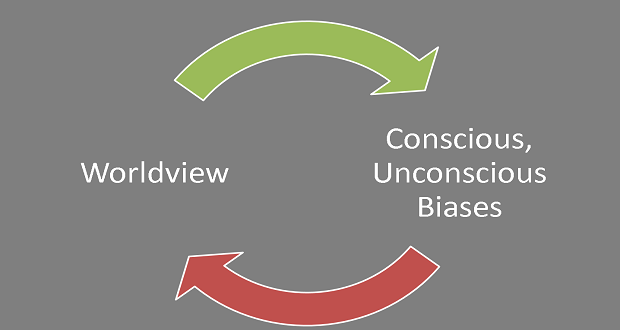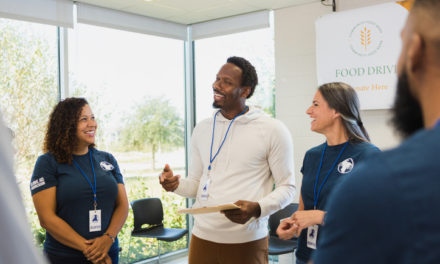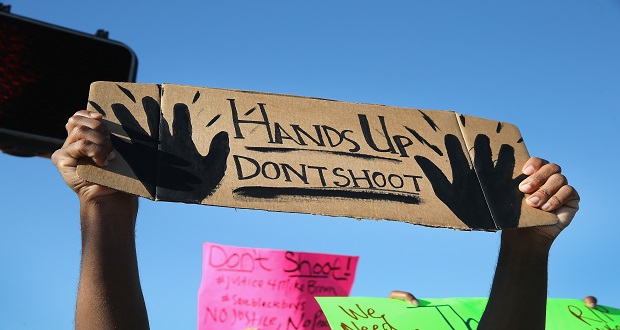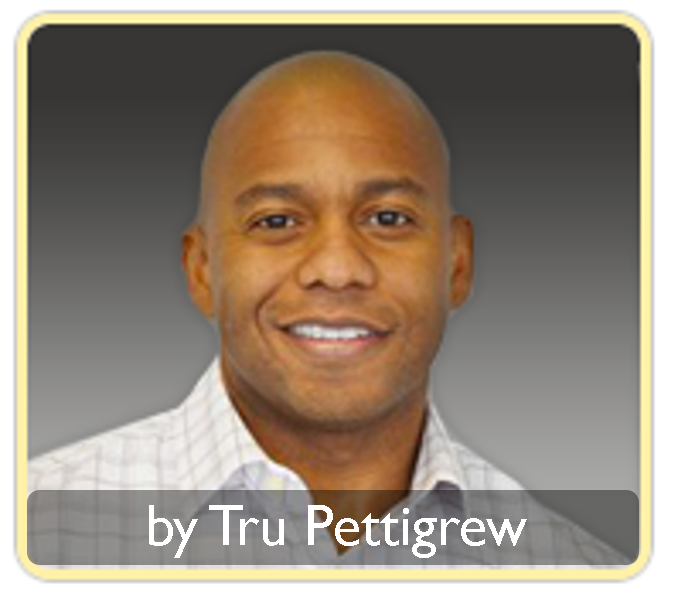
Our biases both conscious and unconscious shape our worldview and our worldview shapes our biases. Our worldview comes from our values, beliefs, perceptions, assumptions, ideals and attitudes. Our values, beliefs, perceptions, etc. come from the early influences in our lives as well as later life experiences. Our worldview dictates how we make decisions, our sense of right and wrong, good and bad and ultimately our behaviors. A worldview is the framework through which individuals, groups or cultures watch, interpret and interact with the world.
[dropshadowbox align=”none” effect=”lifted-both” width=”600px” height=”” background_color=”#ffffff” border_width=”1″ border_color=”#dddddd” ]Worldview Defined: A worldview is the set of beliefs about fundamental aspects of reality that ground and influence all of one’s perceiving, thinking, knowing, and doing. Dr. Kenneth Funk, Associate Professor, Mechanical, Industrial, and Manufacturing Engineering, Oregon State University [/dropshadowbox]
Let’s think about worldview relative to the recent Supreme Court decision on affirmative action. (See this week’s Buzz.) Justice Sotomayor’s worldview differed sharply from all of the other Justices except Ruth Bader Ginsberg, who also dissented. In five separate opinions, the Justices had starkly conflicting views. The Justices in the majority, said that policies affecting minorities that do not involve intentional discrimination should be decided by the voters rather than in the courtroom.
Sotomayor believes the Constitution requires special vigilance in light of the history of slavery, Jim Crow and recent examples of discriminatory changes to state voting laws. The majority of Justices, however, believe that we should move towards a color blind society. Justice Clarence Thomas, the only African American on the high court, is also against affirmative action while Sotomayor believes that it opened doors that would have never been possible for a Latina raised by a single mother in the Bronx.
Chief Justice Roberts said in a 2007 decision that limited the use of race to achieve integration in public schools, “The way to stop discrimination on the basis of race is to stop discriminating on the basis of race.” Justice Roberts grew up in Northern Indiana and attended a private school before Harvard College and Harvard Law School.
Justice Sotomayor turned Robert’s statement around in her dissent with this week’s decision to,
“The way to stop discrimination on the basis of race is to speak openly and candidly on the subject of race, and to apply the Constitution with eyes open to the unfortunate effects of centuries of racial discrimination.”
The widely varying worldviews come from the experiences that each of these Justices has had. Perhaps they believe that they are strictly interpreting the constitution, but whether they know it or not (i.e. may be unconscious), their past experiences which shape their belief systems are at the root of their differing opinions. Justice Sotomayor, as a Latina woman likely knows what discrimination and exclusion look like, feel like and understands the ultimate impact not only individually but on society as a whole. On the other hand Justice Roberts’s worldview is based on his experiences as a white male, whose father was a plant manager and could afford to send him to a private Catholic boarding school.
Perhaps Justice Roberts and even Justice Thomas’ worldview is that society is basically a meritocracy where one’s achievements are rewarded based strictly on merit and maybe Justices Ginsberg and Sotomayor hold an opposing worldview based on personal experience that merit only is not a guarantee for everyone. Just last week Justice Ginsberg said that she would like to see the Equal Rights Amendment become a part of the constitution. She said she would like her granddaughters to see that gender equality is a basic principle of our society.
In training sessions, we invite participants to explore their worldview through several different experiential exercises such as completing a cultural identity worksheet and watching a short video which asks, “what did you see?” after viewing it. These types of experiences allow participants to enhance self-awareness of their worldview, what has shaped it and how it may differ from others based on their different experiences.
The bottom line is worldview matters!


















